In the ever-growing world of beers, foodservice establishments are constantly expanding their beer menus to cater to the diverse preferences of their patrons. Offering an extensive selection ensures that there's a perfect drink for every beer lover who walks through your doors. However, with such a wide variety of options, it can be challenging for bartenders and servers to grasp the unique characteristics of each beer.
That's why we've created this comprehensive beer guide to assist you in understanding the distinctive qualities of each brew. Armed with this knowledge, you'll be equipped to make informed beer and food pairing recommendations and effectively upsell your customers.
How Is Beer Classified?
Every beer served at your esteemed brewery, bar, or restaurant can be classified into two fundamental types: ales and lagers. The key differentiating factor lies in the specific strain of yeast employed during the fermentation process. Despite its seemingly simplistic nature, the choice of yeast has a profound impact on both the brewing method and the final flavor profile of the beer.
Understanding the fundamental distinction between ales and lagers is crucial for brewers, bartenders, and servers alike. This knowledge enables you to guide your patrons through the diverse beer selection and help them make informed choices based on their preferences. By appreciating the profound influence of yeast on fermentation and flavor, you can elevate the beer-drinking experience at your establishment to new heights.
How Are Ales Made?
Ales are brewed with Saccharomyces cerevisiae, which is a yeast that ferments throughout the beer and settles at the top of the vessel. They typically ferment at temperatures between 60°F to 75°F which allows the yeast to quickly process. Ales, characterized by their rich and robust flavors, are fermented using top-fermenting yeast. They are known for their complex aromas and distinctively fuller bodies.
How Are Lagers Made?
Lager beers are brewed with Saccharomyces pastorianus yeast, which ferments at the bottom of the vessel. This type of yeast ferments best at temperatures between 35°F to 55°F. The fermentation process of lagers takes longer to complete than ales because they ferment in cooler temperatures. Lagers tend to have a smoother mouthfeel and a lighter, more refreshing character. They often showcase subtle nuances of malt and hops, offering a balanced and delicate flavor profile.
Different Types Of Beers
Beers may be broken down into ales and lagers, but there are a number of different types of beers. Each beer varies greatly in its color, alcohol content, and taste. Understanding the difference between each kind of beer allows you to make drink recommendations to customers based on their meal or taste preferences.
The pale ale is one of the most popular beer styles in the world. It’s known for its golden to copper color and hops. Brewed with pale malt and ale yeast, pale ales tend to be hoppy and feature light malt flavors, which give the drink a bitter aftertaste. They generally have low alcohol content and are easy to drink.
Pale Ales
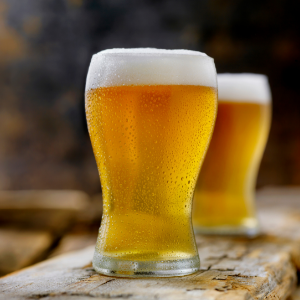 The pale ale is one of the most popular beer styles in the world. It’s known for its golden to copper color and hops. Brewed with pale malt and ale yeast, pale ales tend to be hoppy and feature light malt flavors which give the drink a bitter aftertaste. They generally have low alcohol content and are easy to drink.
The pale ale is one of the most popular beer styles in the world. It’s known for its golden to copper color and hops. Brewed with pale malt and ale yeast, pale ales tend to be hoppy and feature light malt flavors which give the drink a bitter aftertaste. They generally have low alcohol content and are easy to drink.
Types Of Pale Ales
- American amber ale
- American pale ale
- Blonde ale
- English pale ale
Pale Ale Food Pairings
- Spicy foods
- Savory dishes
India Pale Ales
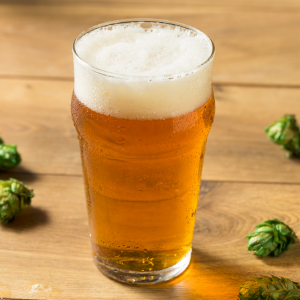 India pale ales (IPAs) usually have a golden or amber color. This beer tends to be bitter due to the number of hops used to brew it. However, many brewers add citrus or herbal tones to IPAs which help balance the bitterness and make it flavorful. This drink possesses high alcohol content and many patrons may find this drink to be strong. Before recommending IPAs to customers, ask them if they would like a hoppy but heavy drink.
India pale ales (IPAs) usually have a golden or amber color. This beer tends to be bitter due to the number of hops used to brew it. However, many brewers add citrus or herbal tones to IPAs which help balance the bitterness and make it flavorful. This drink possesses high alcohol content and many patrons may find this drink to be strong. Before recommending IPAs to customers, ask them if they would like a hoppy but heavy drink.
Types Of India Pale Ales
- American IPA
- English IPA
- Imperial IPA
- New England Style IPA
- West Coast IPA
India Pale Ale Food Pairings
- Fried foods
- Meats
- Fish
- Poultry
Pilsners
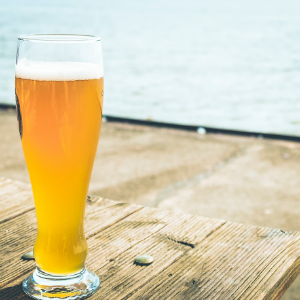 Originating in Pilsen, Czech Republic, this light gold drink is typically made with malts, hops, and neutral or hard water. Pilsners stand out from other lagers because they have a dry, slightly bitter taste. This beverage is extremely popular during the summertime because it’s easy to drink and has low alcohol content.
Originating in Pilsen, Czech Republic, this light gold drink is typically made with malts, hops, and neutral or hard water. Pilsners stand out from other lagers because they have a dry, slightly bitter taste. This beverage is extremely popular during the summertime because it’s easy to drink and has low alcohol content.
Types Of Pilsners
- American pilsner
- Czech pilsner
- German pilsner
Pilsner Food Pairings
- Soft cheeses
- Seafood
- Poultry
- Pork
Stouts
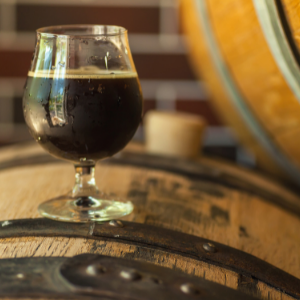 Stouts are well-known for their dark color and thick, creamy head. They feature a heavily roasted flavor that comes from unmalted roasted barley that is added to the wort. Stouts often contain hints of coffee, chocolate, licorice, or molasses which makes this beer unique and great to pair with desserts.
Stouts are well-known for their dark color and thick, creamy head. They feature a heavily roasted flavor that comes from unmalted roasted barley that is added to the wort. Stouts often contain hints of coffee, chocolate, licorice, or molasses which makes this beer unique and great to pair with desserts.
Types Of Stouts
- American stout
- American imperial stout
- Irish dry stout
- Milk stout
- Oatmeal stout
- Oyster stout
Stout Food Pairings
- Desserts
- Grilled meats
- Shellfish
Porters
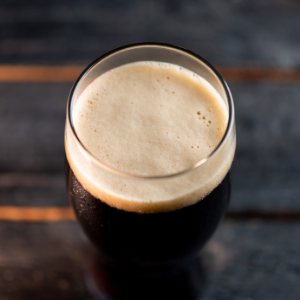 Porters originated in London during the 18th century and are well-known for their toasty aroma and roasted flavors. They are made with roasted brown malts or barley which gives the drink strong notes of chocolate, toffee, coffee, and caramel. Although porters have a similar color to stouts, porters have a crisper taste.
Porters originated in London during the 18th century and are well-known for their toasty aroma and roasted flavors. They are made with roasted brown malts or barley which gives the drink strong notes of chocolate, toffee, coffee, and caramel. Although porters have a similar color to stouts, porters have a crisper taste.
Types Of Porters
- American imperial porter
- Baltic porter
- English brown porter
- Robust porter
- Smoke porter
Porter Food Pairings
- Smoked foods
- Barbeque
- Desserts
Brown Ales
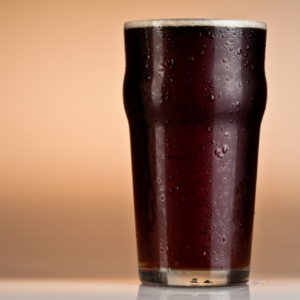 Brown ales range in color from amber to brown and are mellow but flavorful. The majority of brown ales feature chocolate, caramel, citrus, or nut notes. However, depending on where the beer was brewed, it’ll likely have a different flavor. The English version of the brown ale is usually dry and nutty, while the American version tends to be hoppier.
Brown ales range in color from amber to brown and are mellow but flavorful. The majority of brown ales feature chocolate, caramel, citrus, or nut notes. However, depending on where the beer was brewed, it’ll likely have a different flavor. The English version of the brown ale is usually dry and nutty, while the American version tends to be hoppier.
Types Of Brown Ales
- American brown ale
- English brown ale
- Mild brown ale
Brown Ale Food Pairings
- Nutty cheeses
- Red meats
- Barbeque
Wheat Beers
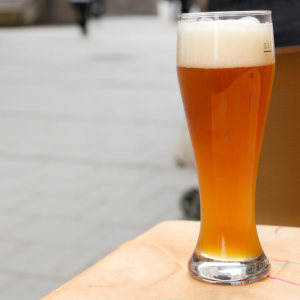 With wheat as its malt, this beer has a smooth texture and hazy body. This beer has very little hops presence and its flavor depends on the type of wheat used. Wheat beers tend to have citrusy and tangy flavors that make them a great beverage for a sunny day.
With wheat as its malt, this beer has a smooth texture and hazy body. This beer has very little hops presence and its flavor depends on the type of wheat used. Wheat beers tend to have citrusy and tangy flavors that make them a great beverage for a sunny day.
Types Of Wheat Beers
- American wheat
- Belgian witbier
- Berliner Weisse
- Dunkelweizen
- Hefeweizen
Wheat Beer Food Pairings
- Salads
- Fruit tarts
- Vegetables
- Seafood
Sour Ales
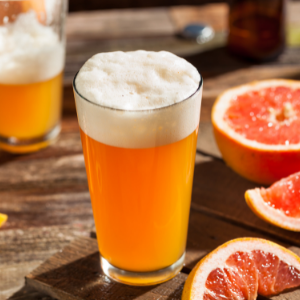 Sour ales are brewed with wild yeast and bacteria to help provide them with high levels of acidity. The acidity gives the beer a tart and sour flavor as opposed to the bitter flavors you usually taste in other ales. Many brewers also add fruits and spices to wild ales to give them a sweet, fruity profile.
Sour ales are brewed with wild yeast and bacteria to help provide them with high levels of acidity. The acidity gives the beer a tart and sour flavor as opposed to the bitter flavors you usually taste in other ales. Many brewers also add fruits and spices to wild ales to give them a sweet, fruity profile.
Types Of Sour Ales
- American Brett
- American sour
- Belgian fruit lambic
- Belgian gueuze
- Flanders red ale
Sour Beer Food Pairings
- Fruit tarts
- Salads
- Seafood
- Vegetables
Specialty Beers
Specialty beers are a delightful and diverse category of brews that cater to the adventurous palates of beer enthusiasts. These beers go beyond the traditional styles and push the boundaries of flavor, aroma, and brewing techniques. Crafted with passion and creativity, specialty beers embrace a myriad of unique ingredients, including exotic fruits, spices, herbs, and even barrel-aged spirits, resulting in a tapestry of complex and tantalizing flavors. From bold and robust imperial stouts to tart and refreshing sour ales, specialty beers offer a remarkable sensory experience that appeals to both connoisseurs and those seeking a new beer adventure. With their distinct characteristics and endless possibilities, specialty beers showcase the boundless creativity and craftsmanship of the brewing community, making every sip an exploration into the world of exceptional beer.
Types Of Specialty Beers
- American black ale
- Barrel-aged beer
- Chocolate beer
- Coffee beer
- Fruit and vegetable beer
- Gluten-free beer
- Herb and spice beer
- Honey beer
- Pumpkin beer
- Rye beer
- Session beer
- Smoke beer
Specialty Beer Food Pairings
- Cheese (varies by beer)
- Seafood
- Chocolate
- Meat stew
- Salads
- Roasted vegetables
Choose The Right Glassware
Choosing the right glassware to enhance the beer-drinking experience is a common practice among beer enthusiasts. Each type of beer has its unique characteristics, and the shape and design of the beer glass can significantly impact the aroma, flavor, and overall enjoyment of the brew.
By selecting the right beer glass, you can elevate the sensory experience, showcasing the beer's characteristics and enhancing your enjoyment. While these suggestions provide a starting point, it's important to remember that personal preference ultimately plays a significant role in picking the perfect glassware for your favorite beer style.
Terms Explained
Understanding the various beer terms is essential for any beer enthusiast or someone looking to explore the world of beer. Let's delve into the meanings of two common beer terms: ABV (Alcohol By Volume) and IBU (International Bitterness Units).
What Is ABV?
ABV (Alcohol By Volume) refers to the percentage of alcohol present in a beer by volume. It provides an indication of the beer's strength and potency. ABV is typically expressed as a percentage, such as 5% or 8%. The higher the ABV, the more alcohol content the beer contains.
The ABV of a beer is determined during the fermentation process, when yeast consumes sugars in the wort and converts them into alcohol and carbon dioxide. Different beer styles have varying ABV ranges. For example, light lagers and pilsners usually have lower ABV levels ranging from 3% to 5%, while stronger beers like IPAs, stouts, and Belgian ales can have ABV levels ranging from 6% to 10% or even higher.
What Is IBU?
IBU (International Bitterness Units) measures the perceived bitterness of a beer, resulting from the hops used during brewing. It quantifies the concentration of bitter compounds, primarily iso-alpha acids, in a beer. The higher the IBU, the more pronounced the bitterness is likely to be.
The IBU scale typically ranges from 0 to 100 or higher, with higher values indicating greater bitterness. However, it's important to note that the perceived bitterness can vary depending on other factors like malt sweetness and hop flavor. Beers with low IBU values, such as wheat beers or some English ales, tend to have a milder, more balanced bitterness. On the other hand, hop-forward styles like IPAs and Double IPAs can have significantly higher IBU levels, resulting in a more intense bitterness.
It's worth mentioning that while ABV and IBU are useful indicators, they do not provide a comprehensive understanding of a beer's flavor profile. Other factors such as malt sweetness, hop aroma, yeast characteristics, and various brewing techniques also contribute to the overall taste experience.
By familiarizing yourself with these beer terms, you can gain a deeper appreciation for the different aspects that make each beer style unique. Whether it's considering the ABV to gauge a beer's strength or assessing the IBU to anticipate its bitterness level, understanding these terms can help you make more informed choices when selecting and enjoying your favorite brews.
Cooking With Beer
Cooking with beer is a culinary technique that adds depth, complexity, and a unique flavor profile to various dishes. Incorporating beer into your cooking repertoire opens up a world of possibilities, from tenderizing meats to infusing rich, malty notes into stews and sauces. Let's explore the art of cooking with beer and discover how it can elevate your culinary creations.
- Beer as a flavor enhancer: Beer, with its diverse range of flavors, can enhance the taste of many dishes. Whether it's a hearty beef stew, a savory cheese dip, or a flavorful marinade for grilled meats, beer brings a distinct character and complexity to the dish. The malty sweetness, hop bitterness, and subtle fruity or floral undertones of different beer styles can infuse a unique taste profile into your recipes.
- Beer as a tenderizer: The carbonation in beer acts as a natural meat tenderizer, making it a fantastic ingredient for marinating and braising. The enzymes in beer help break down tough fibers, resulting in tender and succulent meat dishes. From beer-infused barbecue sauces to beer-braised pot roasts, incorporating beer into your cooking can create melt-in-your-mouth textures and impart rich flavors.
- Beer as a leavening agent: Beer can also be used as a leavening agent in baking, especially in bread-making. The yeast in beer creates carbon dioxide bubbles during the fermentation process, which helps bread rise and develop a light, fluffy texture. Beer bread, pretzels, and beer-based pizza dough are just a few examples of how beer can lend a distinct flavor and texture to your homemade baked goods.
You’re Officially A Beer Expert!
Now that you have an understanding of what every beer tastes like and how each one is unique, you can confidently make drink recommendations based on your customers’ preferences. You also have the ability to make beer and food pairings that complement and accentuate the flavors of your food and beer. If your beer list doesn’t include some of these beverages, feel free to add them to your menu to upsell customers and increase profits.








